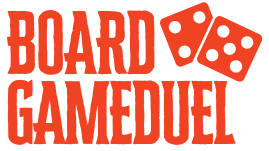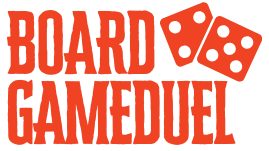When I first heard about the Cascadia board game, I was immediately drawn to its beautiful nature theme and the buzz around its gameplay. After spending quite some time playing it solo and with friends, I wanted to share my full experience, from how to play to why it stands out among other strategy games. If you’re curious about this tile-laying, token-drafting game or wondering whether it’s worth adding to your collection, this blog is for you.
What Is Cascadia?
In simple terms, Cascadia is a nature-themed strategy board game where players build their own ecosystem in the Pacific Northwest. The goal? To create a harmonious landscape by placing habitat tiles and matching wildlife tokens, scoring points based on various animal patterns and terrain setups. It’s a fresh take on tile placement and set collection, and the artwork alone is enough to make you want to dive in.
How to Play Cascadia: A Beginner’s Guide
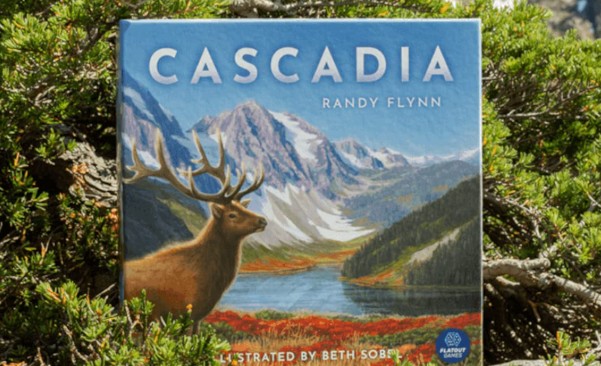
Source: Amazon
If you’re new to the Cascadia board game, don’t worry—the rules are actually pretty straightforward once you get a feel for the flow. Let me walk you through it step-by-step.
On your turn, you’ll see several pairs of tiles and tokens laid out in the center of the table. Each pair consists of one habitat tile—like forest, wetlands, mountains, grasslands, or rivers—and one matching wildlife token, representing animals like bears, salmon, foxes, elk, or hawks. Your job is to select one pair from these available options.
Once you pick a pair, you add the habitat tile to your personal ecosystem board. You’ll place it next to other tiles you’ve already placed, trying to grow larger contiguous areas of the same habitat. This matters because bigger habitat groups earn you more points at the end.
Next, you place the matching wildlife token on any tile of the same habitat type already on your board. The trick here is that each animal has its own unique way of scoring points, which makes your placement decisions meaningful. For example, bears like to be in groups, so placing their tokens together can earn you big points. Salmon prefer long chains, so placing their tokens in a sequence will score you more. Foxes score points for having multiple different animals nearby, adding another strategic layer.
After you place your tile and token, the chosen pair is replaced with a new pair from the supply, and the turn passes to the next player.
This continues until all habitat tiles are placed and your ecosystems are complete. Then, it’s time to tally your points based on the size of habitat groups and the specific scoring rules for each animal. The player with the highest total score wins.
The best part? While the rules are easy to learn, the variety of scoring combinations and the choices you make each turn add plenty of strategic depth. Every game feels fresh because the wildlife scoring cards can change, and the combinations of tiles and tokens you pick affect how your ecosystem shapes up.
What Makes Cascadia Stand Out?
What really sets Cascadia apart is its elegant combination of accessibility and strategy. The tile-laying mechanic feels organic, especially with the nature theme—you’re literally building a landscape that feels alive. The wildlife tokens add a satisfying puzzle element, and the scoring variations ensure every game plays a bit differently.
Plus, the game components are beautifully designed, with stunning artwork that captures the spirit of the Pacific Northwest. It’s a game that’s as much a joy to look at as it is to play.
How Long Does a Game of Cascadia Take?
In my experience, a typical game lasts about 30 to 45 minutes, making it perfect for an evening with friends or family. Solo play usually takes a bit less time, depending on how much you deliberate over your moves. If you’re looking for a game that isn’t a marathon session but still delivers rich gameplay, Cascadia hits that sweet spot.
How Many Players Can Enjoy Cascadia?
Cascadia is designed for 1 to 4 players, and I’ve enjoyed it solo as well as in a group setting. The game scales well, maintaining its challenge and fun whether you’re playing alone or with a full table. It’s an excellent choice if you want a versatile board game that adapts to different group sizes.
How Complex Is Cascadia?
I’d say the complexity level is moderate—definitely accessible for beginners but with enough depth to keep experienced gamers hooked. The rules are clear and easy to explain, but mastering the optimal tile and token placement strategies can take some practice. I often recommend it to players looking for a family-friendly game that doesn’t sacrifice strategic thinking.
Cascadia Board Game Components and Quality
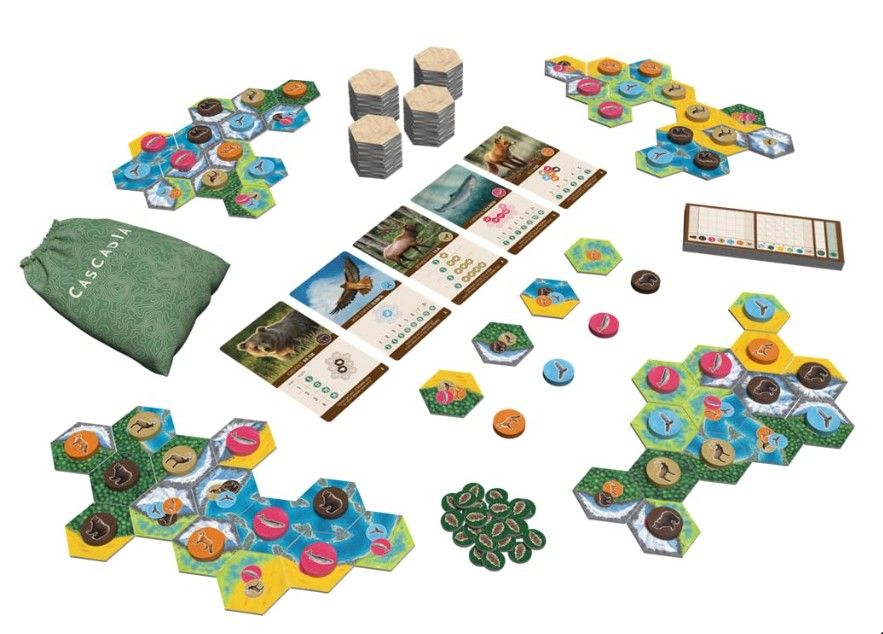
Source: Amazon
From the moment I opened the box, I was impressed with the quality. The tiles are thick and sturdy, and the wildlife tokens are nicely crafted wooden pieces. The artwork is consistent and detailed, making the game components feel premium. This attention to quality adds to the overall immersive experience, and it’s clear the designers put a lot of thought into the production.
Also Read: Slay the Spire Board Game Review
Tips and Strategies to Win Cascadia
If you want to up your game, here are a few strategies that helped me:
- Focus early on creating large contiguous habitats to maximize your tile placement bonus.
- Pay attention to the wildlife scoring cards—each animal scores differently, so tailor your ecosystem accordingly.
- Don’t rush to place all tiles; sometimes waiting for the right combination of habitat tile and wildlife token can pay off.
- Keep an eye on your opponents’ boards (if playing multiplayer) to anticipate their scoring goals.
These tips won’t guarantee a win, but they’ll definitely improve your gameplay and make each match more satisfying.
Cascadia Expansions and Add-Ons You Should Know About
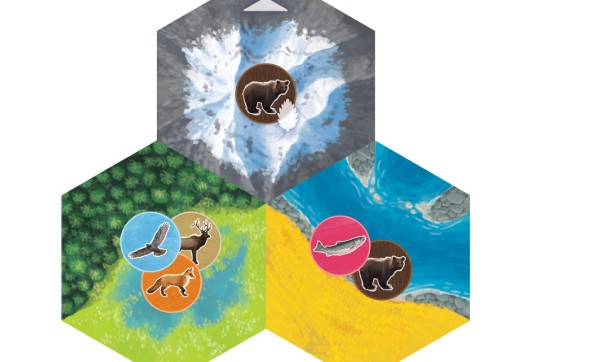
Source: Amazon
The base game is fantastic on its own, but if you fall in love with Cascadia (like I did), expansions add exciting new elements. For example, the “Cascadia: Landmarks” expansion introduces new scoring challenges and landmarks to build, adding variety and replayability. Keep an eye out for expansions to keep your ecosystem building fresh.
Where Can You Buy Cascadia?
You can find Cascadia at most major board game stores, online retailers like Amazon, and specialty game shops. Prices vary, but it’s generally affordable for a game of this quality. If you want to grab a copy, I recommend checking trusted sellers to avoid counterfeit products.
Frequently Asked Questions (FAQs)
1. Is Cascadia a good board game for families?
Absolutely! Its moderate complexity and beautiful theme make it a hit with players of all ages.
2. How long does a typical game last?
Around 30 to 45 minutes, depending on the number of players and how thoughtful you are with your moves.
3. How many players can play Cascadia at once?
1 to 4 players. It works well solo or in a group.
4. Is Cascadia suitable for beginners?
Yes, it has clear rules and is easy to learn, making it beginner-friendly.
5. What age group is Cascadia best for?
Recommended for ages 10 and up.
6. Are there any expansions for Cascadia?
Yes, expansions like “Landmarks” add new mechanics and scoring options.
7. How difficult is Cascadia to learn?
It’s moderately easy, with straightforward rules but strategic depth.
8. What makes Cascadia different from other tile-laying games?
Its unique combination of habitat tile placement and wildlife token drafting with varied scoring makes it stand out.
9. Can you play Cascadia solo?
Yes, solo play is supported and quite enjoyable.
10. Where is the best place to buy Cascadia?
Trusted board game shops and reputable online stores like Amazon are your best bet.
Final Thoughts: Is Cascadia Worth It?
After many rounds playing the Cascadia board game, I can confidently say it’s a must-have for anyone who loves strategic, nature-themed games. It’s accessible for beginners, offers meaningful decisions for veterans, and has gorgeous components that make every game feel special. Whether you want a solo challenge or a casual family game night, Cascadia delivers.
Featured Image: Amazon
